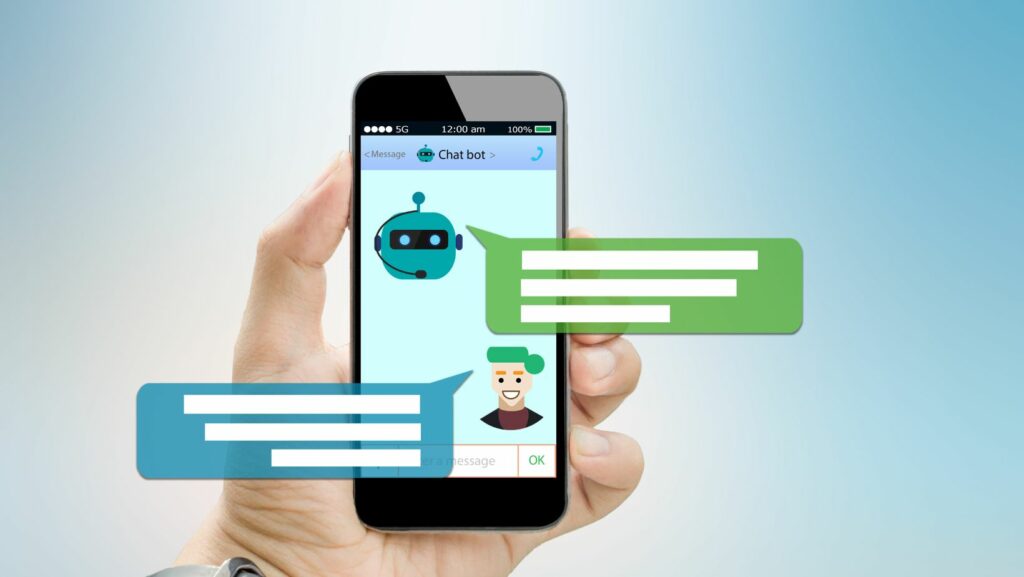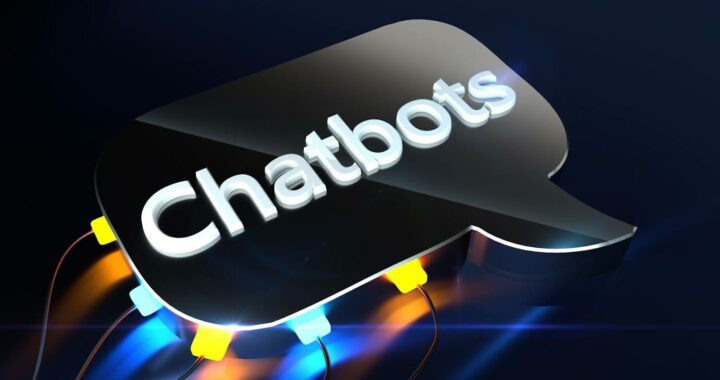
Evaluate the Results of Chatbot Training
To evaluate the results of chatbot training, the following metrics can be considered:
1. Accuracy: An accurate chatbot should be able to understand and respond to user queries correctly. The percentage of correctly answered queries can be a good measure of accuracy.
2. Efficiency: The chatbot should be fast in delivering responses to users’ queries. The average response time can be a good measure of efficiency.
3. Engagement: The chatbot should be able to keep users engaged in the conversation. The number of interactions and duration of the conversation can be used as a measure of engagement.
4. Satisfaction: The chatbot should be able to meet users’ needs and expectations. Surveys or feedback forms can be used to measure user satisfaction.
By evaluating these metrics, improvements can be made to the chatbot, leading to better performance and user satisfaction.
Pro tip: Regular evaluation and updating chatbot will help to deliver better-performing chatbots.
How to Train a Chatbot
Chatbots can help businesses automate customer service tasks, save time, and increase customer satisfaction. To get the most out of a chatbot, it is important to make sure it is properly trained.
Training a chatbot involves teaching it to recognize customer queries and understand natural language. It also involves teaching it to provide accurate responses to customer inquiries.
Let us look at the importance of chatbot training and its impact on customer service.
Why is Chatbot Training Crucial?
Chatbot training is crucial to ensure that your chatbot can handle a variety of user queries and provide accurate responses. It not only helps the chatbot to improve its effectiveness but also enhances the user experience.
Here are some reasons why chatbot training is important:
- Improved accuracy: Chatbot training helps to ensure that the chatbot can recognize different phrases and questions and provide accurate responses. This reduces the chances of user frustration due to incorrect or irrelevant responses.
- Better understanding of user intent: Chatbot training helps to understand user intent and respond appropriately. A well-trained chatbot is more likely to provide a relevant response, leading to higher customer satisfaction.
- Easier scalability: Chatbot training allows your chatbot to handle a larger volume of user queries, making it easier to scale your operations and improve overall efficiency.
- Proactive learning: Chatbot training can identify gaps in knowledge and proactively learn how to better handle specific user queries.
Overall, chatbot training is crucial for the success of any chatbot. It helps to improve accuracy, better understand user intent, easier scalability and proactive learning, leading to a better user experience.

What Happens When Chatbots are Not Trained Well?
When chatbots are not trained well, they can create more problems than they solve. Poorly trained chatbots can cause frustration for users, creating a negative experience for all involved.
Here are some common issues that arise when chatbots are not trained well:
- The chatbot may not understand user queries, leading to irrelevant responses.
- The chatbot may return inaccurate or misleading information.
- The chatbot may not know how to resolve user issues, leading to an endless loop of canned responses.
To avoid these pitfalls, it’s important to invest in chatbot training. Through training, chatbots learn how to recognize and respond to user queries more accurately and effectively. By evaluating the results of chatbot training, businesses can improve the overall performance of their chatbot, leading to higher satisfaction and engagement from users.
How to Set Goals Before Chatbot Training
Setting clear and specific goals before chatbot training is essential to ensure that the training efforts are focused and yield the desired results.
Here are some tips to help you set effective goals before chatbot training:
- Clearly define the purpose of the chatbot and identify its target audience and business objectives.
- Identify the key performance indicators (KPIs) that you want to measure as a result of the chatbot training. These can include metrics such as user engagement, customer satisfaction, and conversion rates.
- Develop a plan that outlines the steps required to achieve your goals, including selecting the appropriate training resources and scheduling training sessions.
- Regularly evaluate the results of the chatbot training against your goals and adjust your plan as needed to optimize performance.
By setting goals before chatbot training, you can ensure that your chatbot is aligned with your business objectives and delivers value to your customers. Pro tip: Emphasize the importance of ongoing training to ensure that your chatbot remains up-to-date and continues to meet your goals.
Chatbot Training Techniques
Chatbot training involves optimizing the training process to ensure that the chatbot has the most accurate and up-to-date knowledge to answer customer queries.
There are a variety of techniques available to optimize the training process, and this article will explore the different methods and evaluate the results of training.
Developing Chatbot Personality
Developing a chatbot personality requires several chatbot training techniques to help evaluate the results and ensure effective communication with users.
Here are some tips for developing chatbot personality:
1. Define your chatbot’s purpose and target audience to create a suitable personality that aligns with your brand.
2. Choose the right chatbot training techniques such as natural language processing, machine learning, and data analytics to ensure seamless communication with users.
3. Engage your chatbot in user interactions and evaluate the results of chatbot training to improve its responses and effectiveness.
4. Use a conversational tone, emojis, and appropriate language to create an engaging and friendly chatbot personality.
Pro tip: Creating a chatbot personality that resembles a human can help to increase user engagement and make your chatbot more relatable to users.
Train Chatbots to Understand User Intent
When it comes to chatbots, understanding user intent is essential for providing helpful and accurate responses. Here are some effective techniques for training chatbots to understand user intent:
Natural Language Processing: This technique involves training chatbots to analyze language patterns and decode the user’s intent behind the message.
Machine Learning: This technique involves training chatbots to observe user messages and categorize them into different intent groups. Over time, chatbots become more accurate in identifying user intent.
Intent Labeling: This technique involves labeling user messages with specific intent tags to help chatbots understand the context of the message.
Evaluating the results of chatbot training is also critical to ensure its accuracy and effectiveness. Here are some essential metrics to consider when evaluating chatbot training:
Accuracy of Intent Recognition: This metric measures the chatbot’s ability to accurately recognize user intent.
Response Time: This metric measures how quickly chatbots provide responses to user queries.
Error Rate: This metric measures the percentage of incorrect responses given by chatbots.
Pro Tip: Regularly evaluating and refining chatbot training is crucial for improving its accuracy and effectiveness.
Teach Chatbots Industry-Specific Knowledge
Teaching chatbots industry-specific knowledge requires a combination of techniques to ensure their responses are relevant, accurate, and helpful to users. Evaluating the results of chatbot training can help improve the performance of chatbots and provide insights into user behavior.
Here are some chatbot training techniques to consider:
1) Use supervised learning to train chatbots with labeled data that reflects the specific needs of your industry or business.
2) Incorporate natural language processing (NLP) to enable chatbots to understand user queries and deliver appropriate responses.
3) Provide chatbots with access to relevant databases, documents, and resources to increase their industry-specific knowledge.
4) Continually monitor and evaluate the performance of chatbots using metrics such as response time, user satisfaction, and accuracy.
By training chatbots with industry-specific knowledge and evaluating their performance, businesses can improve customer service, increase efficiency, and reduce costs.

Utilize Machine Learning to Enhance Performance
Machine learning can improve chatbot performance by enhancing the training techniques used to develop the chatbot.
Here are a few tips to evaluate the results of chatbot training:
1. Use conversational analysis to evaluate the chatbot performance. Analyze the context of the conversation, the user’s intent, and the emotions.
2. Measure the accuracy and precision of the chatbot’s responses. A well-trained chatbot should provide accurate and relevant responses 90% of the time.
3. Use user feedback to improve chatbot training. The more data you gather, the more you can improve the chatbot training.
4. Implement machine learning algorithms to enhance chatbot performance. These can include reinforcement learning, deep learning techniques, and natural language processing.
With the help of machine learning, chatbots can learn and adapt continuously, providing more personalized and accurate responses to users.
Measuring Chatbot Training Effectiveness
In order to determine the effectiveness of a chatbot training program, it is important to evaluate the results. This can be done by measuring the performance of the chatbot before and after the training, as well as by measuring customer satisfaction and the amount of time saved.
Let’s take a closer look at how to measure the effectiveness of chatbot training.
Metrics to Measure Chatbot Performance
To measure the performance of your chatbot, you need to track certain metrics that evaluate the effectiveness of your training efforts.
Here are some metrics to consider while measuring the chatbot’s performance:
1. Chatbot usage metrics – These metrics help you analyze how often users are engaging with your chatbot, what type of conversations are more frequent, and how long a conversation lasts.
2. Conversation success rate – This metric determines the number of successful conversations a chatbot had, divided by the total number of conversations it had.
3. Response time – This metric explains the time it takes for the chatbot to respond to a user’s query. A shorter response time increases engagement.
4. Escalation rate – This measures the number of times the chatbot is unable to answer the user’s query, and the user is transferred to an agent.
Tracking these metrics can guide you in improving your chatbot’s performance, increasing its engagement rate, and delivering better services to the users.
Common Mistakes While Measuring Chatbot Performance
Measuring chatbot performance is crucial in enhancing its effectiveness and improving customer satisfaction. Here are the most common mistakes to avoid while measuring chatbot performance:
1. Ignoring qualitative feedback: While quantitative metrics such as response times and conversion rates are essential, ignoring user feedback can be a costly mistake. Feedback helps you understand the user’s expectations, demands, and pain points.
2. Not analyzing customer journey data: Chatbot interactions occur within a broader customer journey. Analyzing where users begin and end their interactions can help you identify bottlenecks and improve the chatbot’s performance.
3. Focusing on irrelevant metrics: Measuring the wrong metrics can give you a false sense of performance. For example, tracking only the number of conversations handled, instead of tracking the number of successful outcomes achieved, can lead to an increase in irrelevant conversations.
To make chatbot performance more effective, track relevant metrics, analyze qualitative feedback, pay attention to customer journey data, and continuously improve the chatbot’s performance.
How a Chatbot Feedback Loop Can Improve Performance
A chatbot feedback loop is a great tool to improve the performance of chatbots. The process involves continuously measuring chatbot training effectiveness and evaluating the results to identify areas of improvement.
Here’s how a chatbot feedback loop can benefit your chatbot’s performance:
1. Identify Key Metrics: Determine the key metrics to measure the chatbot’s performance, such as user satisfaction, engagement rates, or task completion rates.
2. Collect Feedback: Gather feedback from users through surveys or chat logs to evaluate the chatbot’s performance against the key metrics.
3. Analyze Data: Analyze the feedback data to identify areas of improvement, such as common user queries the chatbot can’t answer or frequently misunderstood user input.
4. Implement Improvements: Use the insights gained from the analysis to improve the chatbot’s performance, such as improving chatbot responses or adding new capabilities.
By using a chatbot feedback loop, you can continuously analyze and improve your chatbot’s performance to maintain a positive user experience.

Improving Over Time
Training a chatbot may initially require some trial and error, but if done correctly, the chatbot should become more efficient and accurate over time. The more conversations that the chatbot goes through, the more it learns, and the better the results will be. By rewarding the bot for correct responses and punishing it for incorrect ones, the chatbot can improve its understanding of the language and its functions.
Let’s look further into the ways to evaluate the results after the chatbot’s been properly trained.
Continuously Updating the Chatbot’s Knowledge
Continuously updating a chatbot’s knowledge is crucial to improving its performance and providing effective solutions to users. To evaluate the results of chatbot training, it’s essential to assess its accuracy, relevancy, and overall user experience.
Here are some tips to improve the chatbot over time:
Analyze user queries: Analyze user feedback, questions, and input to identify common themes and areas for improvement in the chatbot.
Add new information: Continually update the chatbot with new information and responses to ensure that it can answer user queries effectively and efficiently.
Test the chatbot: Regularly test the chatbot using scripts, scenarios, and mock conversations to ensure that it’s functioning correctly and providing the intended solutions to users.
Optimize the chatbot: Optimize the chatbot’s interface and interactive style to enhance its overall user experience and aid in the training process. Evaluate user interactions and gather feedback regularly to identify areas for improvement.
By evaluating the performance of the chatbot, adding new information, and optimizing its interface, you can significantly improve its effectiveness over time.
Using Analytics to Monitor Chatbot Performance
Using analytics to monitor chatbot performance is an effective way to evaluate the results of chatbot training and improve over time.
By utilizing analytics, chatbot performance can be evaluated based on various metrics such as response time, user engagement, error rates, and overall satisfaction. This data provides valuable insight into how the chatbot is performing and where improvements can be made.
Here are some ways to use analytics to monitor chatbot performance:
- Track user engagement: Analyzing chat logs can help determine how often users engage with the bot and how long each interaction lasts.
- Evaluate user satisfaction: Conducting surveys after the interaction can help determine the user’s overall satisfaction with the chatbot’s performance.
- Monitor error rates: Keeping track of error rates can help identify patterns and recurring issues that need to be addressed in the training.
By using analytics to monitor chatbot performance, you can continually evaluate and improve the chatbot’s effectiveness over time.
Pro tip: Regularly overview analytics data to identify areas where chatbot training can be improved.
What to Do When the Chatbot Isn’t Meeting Goals?
When a chatbot is not meeting its goals, it’s essential to evaluate its performance and make improvements over time. Here are some steps that can be taken to improve the chatbot’s performance and ensure that it meets its goals:
1. Identify the problem: Determine which goals the chatbot is failing to meet and identify the root cause of the problem.
2. Analyze data: Analyze the data collected during chatbot interactions to identify patterns, trends, and areas for improvement.
3. Train the bot: Retrain the chatbot using new data sets, conversations, and scenarios to improve its ability to handle queries effectively.
4. Test and evaluate: Test the chatbot’s performance to ensure that the improvements made have had the desired effect and tweak the process accordingly.
By consistently evaluating the results of chatbot training and making iterative improvements over time, you can ensure that the chatbot meets its goals and provides a seamless user experience.
Best Practices for Chatbot Training
Training chatbots can be a time-consuming process but is necessary to ensure that your chatbot performs optimally. Evaluating the results of chatbot training is an important step in this process.
This section will provide insights into the best practices for training chatbots, from evaluating accuracy to determining the appropriate response time.
Develop a Plan Before Starting Chatbot Training
Before embarking on the chatbot training process, it is essential to develop a plan that outlines the goals, objectives, and strategies for training the chatbot.
Here are some steps to develop a successful chatbot training plan:
1. Define the objectives and goals of the chatbot.
2. Identify the target audience and tailor the chatbot’s personality and communication style accordingly.
3. Decide on the chatbot’s conversational flow and develop a script for the chatbot.
4. Determine the types of data that the chatbot will use and integrate them into the training process.
After the chatbot has undergone training, it is essential to evaluate its performance and make necessary adjustments where needed. A few metrics that can be considered to evaluate the results of chatbot training are user satisfaction rate, response time, number of successful interactions and feedback/suggestions received from users.
Pro tip: Continuously evaluate and train the chatbot to improve its performance and provide a better user experience.

Train Chatbots Using Real Conversations
Training chatbots using real conversations is the best approach for making them more human-like and effective. Here are some best practices for chatbot training and how to evaluate the results of your training.
Best Practices:
1. Start with the most common questions or requests your chatbot will receive.
2. Use real conversations instead of hypothetical or ideal situations.
3. Use diverse interactions to build a more comprehensive training set.
4. Use relevant industry or brand-specific terminology to prepare the chatbot for the right context.
To evaluate the results of your training, you need to conduct extensive testing. Here are a few metrics that you can use:
1. Accuracy: Evaluate how well the chatbot is providing solutions to customers’ queries.
2. Efficiency: Identify how quickly the chatbot is solving customer queries.
3. User Satisfaction: Use customer feedback surveys to gauge how satisfied they are with the chatbot experience.
Evaluating these metrics will help you understand how effectively your chatbot is performing and how you may need to adjust its training.
Pro Tip: Regularly update the chatbot’s training based on new customer interactions to improve its performance.
Human Overview and Monitoring
Human overview and monitoring are essential best practices for chatbot training, as they allow you to evaluate the results of the chatbot’s training and improve its conversational abilities.
Here’s why human overview and monitoring are crucial in chatbot training:
- Chatbots are only as good as their training data.
- Mistakes made by chatbots can severely impact the user experience.
- Human overview and monitoring can catch errors and inconsistencies in the chatbot’s responses.
- By evaluating the chatbot’s conversations, you can identify areas for improvement and adjust the training data accordingly.
To ensure effective human overview and monitoring, consider the following best practices:
- Set up a process for regular overviews of the chatbot’s conversations and responses.
- Establish guidelines for the chatbot’s tone, language, and conversational flow.
- Provide feedback to the chatbot’s training data as needed.
- Continuously test and refine the chatbot’s conversational abilities.
Chatbot Training Tools
The use of chatbot training tools is becoming increasingly popular as businesses look to find ways to quickly and accurately deliver customer service. The goal of these tools is to provide automated customer service solutions through the use of machine learning algorithms and natural language processing.
In this article, we’ll evaluate the pros and cons of different chatbot training tools and provide some tips on how to best use them.
List of Chatbot Training Platforms
There are several Chatbot Training Platforms available online that can help you train and evaluate the results of your chatbot training program. Here’s a list of some popular Chatbot Training Platforms:
Dialogflow: Dialogflow offers a comprehensive chatbot training platform with features such as machine learning and natural language processing.
BotStar: BotStar is another robust and intuitive chatbot training tool that allows for multi-channel integration.
IBM Watson Assistant: IBM Watson Assistant offers enterprise-level chatbot training with advanced machine learning algorithms, custom integration, and analytics.
Rasa: Rasa is an open-source chatbot training platform that offers complete control and flexibility to developers.
Receptiviti: Receptiviti is a chatbot training platform that uses advanced AI-powered psycholinguistics to simulate human-like conversations.
Pro Tip: Choose a chatbot training platform that aligns with your specific needs and goals, and make sure to evaluate the results of your training program regularly to make any necessary improvements.
Advantages and Limitations of Chatbot Training Tools
Chatbot training tools offer several advantages and limitations that businesses must consider before evaluating the results of their chatbot training.
Advantages of chatbot training tools:
- Improved Customer Experience: chatbot training tools allow businesses to create more personalized and accurate responses for their customers’ queries.
- Cost Reduction: With chatbot training tools, businesses can reduce the cost of customer support services by automating repetitive tasks.
- Time-Saving: Chatbot training tools allow businesses to create and train chatbots quickly and efficiently.
Limitations of chatbot training tools:
- Lack of Customization: training tools may not be able to fully customize chatbots according to the business’s specific requirements.
- Limited understanding: Chatbots have limited understanding of the query context and customer emotions, leading to inaccurate responses at times.
- Requires Constant Improvement: chatbot technology is continually evolving, requiring businesses to update their chatbots frequently to keep up with the latest advancements.
By understanding these advantages and limitations, businesses can evaluate the results of the chatbot training process and make informed decisions about improving their chatbot’s performance.

Training Chatbots via Open Source Tools
There are several open-source tools available for training chatbots effectively. Here are a few examples:
Rasa: Rasa is an open-source tool used to build and train chatbots. It allows developers to customize and train their chatbots on large datasets.
TensorFlow: TensorFlow is an open-source machine learning platform used for training chatbots. It provides a wide range of tools, libraries, and community resources for chatbot development.
NLTK: NLTK is a Python-based open-source platform that provides various modules to build and train chatbots. It includes tools for tokenization, stemming, and parsing data.
Evaluating the results of chatbot training is essential to make improvements and enhance their performance. Some evaluation metrics include accuracy, F1-score, and precision. Additionally, conducting user testing after training can help identify areas for improvement.
Pro tip: Regularly evaluating the performance of a chatbot and optimizing its training can help improve its conversational abilities and provide better customer service.
Conclusion
After carefully evaluating the impact of chatbot training, it is obvious that the key advantage of training a chatbot is the fact that it can automate conversations, responding to customer inquiries quickly and accurately. Additionally, it can also help improve customer satisfaction by providing a more personalized experience and can serve as a powerful marketing tool.
Nevertheless, while chatbot training can yield many benefits, there are also some drawbacks associated with it. Let’s explore these further.
Outcomes of Effective Chatbot Training
Effective chatbot training can lead to a host of positive outcomes that can significantly enhance its performance and user experience. Here are some of these outcomes that organizations can achieve through well-designed chatbot training programs:
Higher Accuracy: Effective chatbot training can lead to a better understanding of language nuances, enabling your chatbot to interpret and respond more accurately to user queries.
Improved Responsiveness: A well-trained chatbot can identify users’ intents more quickly and provide appropriate responses, leading to more relevant and faster interactions.
Enhanced Chatbot Conversations: With the use of proper training techniques such as conversational AI and machine learning, chatbots can engage in more natural and engaging conversations, boosting customer satisfaction and loyalty.
Cost Optimization: A well-trained chatbot can handle a higher volume of inquiries and transactions, reducing the need for additional staff, and improving cost optimization.
Increased Sales & Revenue: Chatbots can enhance sales and revenue by providing accurate product recommendations, timely promotions, and discounts, all of which can maximize upsell opportunities and revenue generation.
It is crucial to evaluate the training results continually to determine the effectiveness of the chatbot training program and make the necessary improvements to enhance its overall performance.
Pro Tip: Evaluate your chatbot regularly to ensure it provides the best user experience and performance.
Why Chatbot Training is a Continuous Process
Chatbot training is a continuous process because chatbots continually learn and improve based on user interactions. To ensure that chatbots provide accurate and efficient responses, they need proper training, evaluation, and improvement. Here’s why chatbot training should be continuous:
1. Changing user needs: User needs and preferences are continually changing, and chatbots need to adapt to meet these changing needs effectively.
2. Improving performance: Chatbots may initially be trained with a limited set of data, and as user interactions increase, they become more knowledgeable. With continuous training, chatbots can improve their accuracy and efficiency in resolving user queries.
3. Ensuring quality: Chatbots can make errors, and continuous training can reduce the likelihood of such mistakes occurring.
To evaluate chatbot training, the bot’s performance should be measured against specific KPIs and metrics, including response rate, resolution time, and customer satisfaction. These metrics can help identify areas for improvement and guide the next steps in chatbot training.
Pro Tip: Check your chatbot performance metrics regularly, and adjust your chatbot training process to improve customer interactions.





